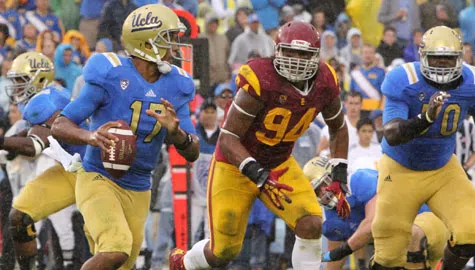 Photo: James Santelli/Neon Tommy. Flickr Creative Commons.
Photo: James Santelli/Neon Tommy. Flickr Creative Commons.
College football is a $2.5-billion-a-year entertainment business that exists largely tax-free. With all of this cash coming into public schools, does it benefit the non-profit mission of universities to have such high-dollar endeavors? Gilbert Gaul suggests it might not.
In his book “Billion Dollar Ball: A Journey Through the Big-Money Culture of College Football,” investigative journalist, Gilbert Gaul examines the largest revenue-generating programs. Gaul says that even though football is bringing in a lot of revenue, at many of the schools the money doesn’t have much benefit outside of the athletic programs.
“What maybe average football fans don’t understand is that this money generally, by and large, stays in the athletic departments,” Gaul tells Steve Fast.
In 2013, the highest paid public employees in 27 states were college football coaches. Gaul argues that the value of university football programs has outpaced the value of education when it comes to dollar
“Look at how a school treats its smartest, brightest, most ambitious students,” Gaul says. Using the University of Oregon as an example he notes that the honors college scholarship is $5000 (which helps cover a $3000 fee required for the program). “The value of a football scholarship–just the tuition, room and board–is going to be somewhere in the neighborhood of $45,000 to $50,000.”
Listen to the interview: Gilbert Gaul on The Steve Fast Show
Follow Steve Fast on Twitter @SteveFastShow





